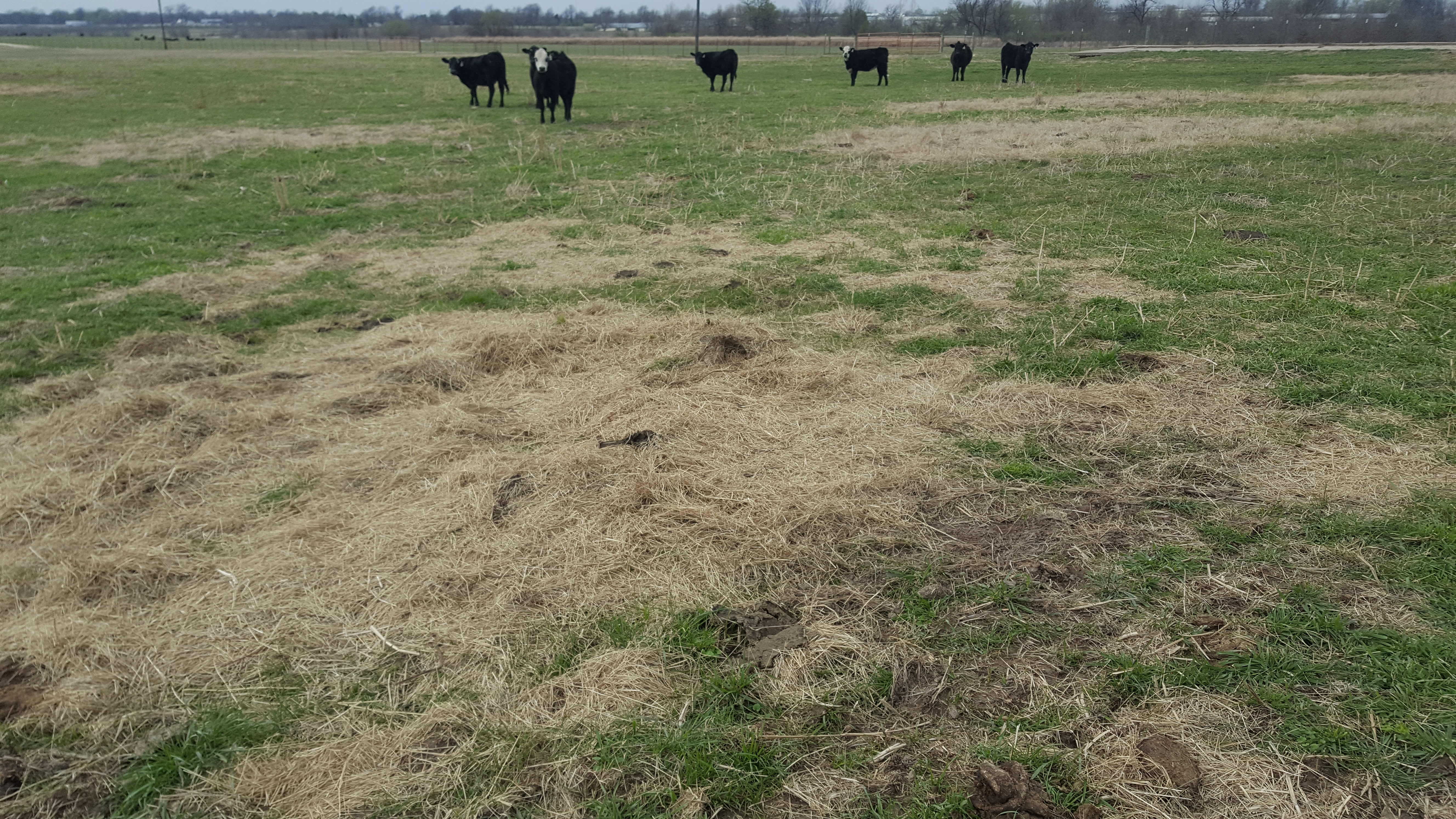Philipp: Old hay that won’t feed cattle could feed soil
March 27, 2017
By the U of A System Division of Agriculture
Fast facts
- Age, mold, moisture take toll on leftover bales
- Bales can be used as fertilizer
(380 words)
(Newsrooms: with art at www.flickr.com/photos/uacescomm/33574580116)
FAYETTEVILLE, Ark. – Age, mold, winter and water can take their toll on the nutrient value of hay bales, but old bales can bring new life to the soil, said Dirk Philipp, associate professor-animal science for the University of Arkansas System Division of Agriculture.

With the arrival of spring, hay-feeding season is drawing to an end, and livestock producers may be left with extras.
“But that doesn’t mean hay goes to waste,” Philipp said. “Turns out that hay can be used as a fertilizer.
“While it’s not as effective as made-for-the-job fertilizers, since hay has been removed from your fields, you may as well return it to get some benefit,” he said.
First, let’s look at the potential nutrient value to your soil. Assuming an average Bermudagrass round bale weighing 1,000 pounds, you could get:
- 12 pounds of nitrogen
- 4 pounds of phosphorus and
- 15 pounds of potassium
- 4 pounds of calcium
- 2 pounds of magnesium and
- 1.5 pounds of sulfur.
“While these are ballpark numbers, keep in mind that the hay quality may vary substantially,” Philipp said. “Of course, the better quality hay should be fed to cattle, but don’t underestimate the nutrients and minerals contained in the not-so-good hay that weathers way along your fence lines.”
How to use it
Philipp said when getting ready to use the hay be sure to know the hay’s source, so “you don’t spread weeds or noxious plants and don’t spray toxic fescue into non-toxic stands.”
The next step would be to use the old hay on bare soil or overgrazed spots to serve as a ground cover. It can also be used in areas that are low in nutrients with little current forage growth.
“You can also incorporate the hay into areas you need to till or work up for other purposes such as pasture renovation,” he said.
There are additional strategies you can use to spread nutrients contained in hay,” Philipp said. “If you need to feed old hay, spread it out across an area and let your animals sort through the best parts of it. This way, they will spread the hay even further.”
Philipp also suggested moving hay rings around at each feeding.
For more information about forage management, contact your county extension office or visit www.uaex.uada.edu.
Pursuant to 7 CFR § 15.3, the University of Arkansas System Division of Agriculture offers all its Extension and Research programs and services (including employment) without regard to race, color, sex, national origin, religion, age, disability, marital or veteran status, genetic information, sexual preference, pregnancy or any other legally protected status, and is an equal opportunity institution.
# # #
Media Contact: Mary Hightower
Dir. of Communication Services
U of A System Division of Agriculture
Cooperative Extension Service
(501) 671-2126
mhightower@uada.edu
Related Links